First phase of Tuas Port completed, greener concrete being explored for future phases
Sign up now: Get ST's newsletters delivered to your inbox
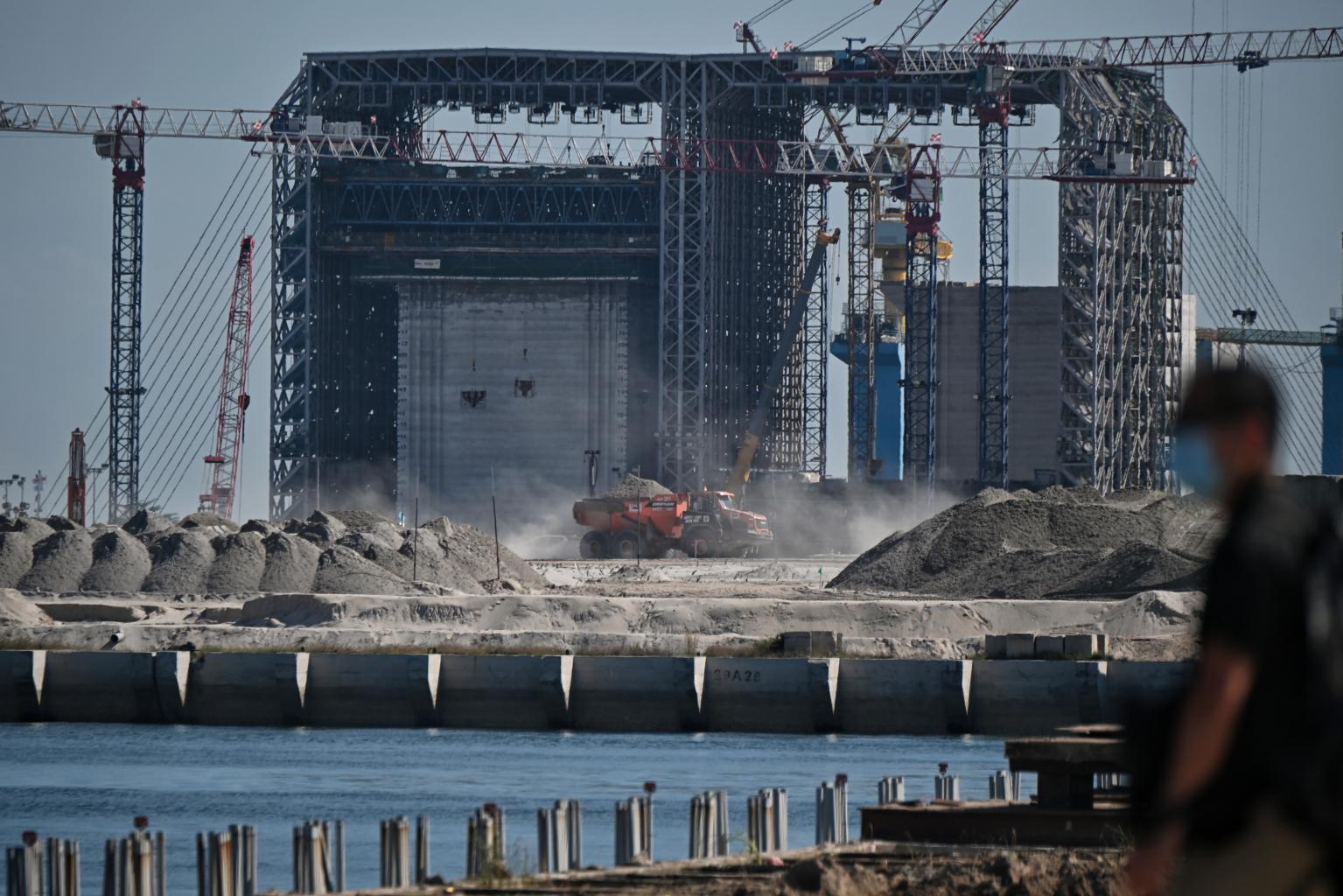
The whole of Tuas Port, when completed, will eventually be able to handle 65 million TEUs.
ST PHOTO: KUA CHEE SIONG
Follow topic:
SINGAPORE - Two berths at Tuas Port will be open for use by the end of the year, with the port's first phase of construction - comprising 21 berths - completed.
The milestone, the culmination of about 34 million hours of work, marks the one-quarter stage of the overall Tuas Port project, which is estimated to cost over $20 billion and is on schedule to be finished by the 2040s.
The opening of Singapore's fifth container port comes at an opportune time, when some of its storage facilities had to be opened ahead of schedule in the past few months to cope with the supply chain crisis.
In September, 2,000 20-foot equivalent units (TEUs) of storage space were made available at Tuas Port to store containers that were stuck here awaiting transshipment. Each TEU is the standard dimension of one shipping container.
At 414ha, Tuas Port Phase 1 occupies the size of 773 football fields, and will contribute another 20 million TEUs to Singapore's annual handling capacity, which currently stands at 37.2 million.
The whole of Tuas Port, when completed, will eventually be able to handle 65 million TEUs - nearly double Singapore's current port capacity.
At a commemoration event on Tuesday (Nov 30), Transport Minister S. Iswaran said that Tuas Port Phase 1's completion was especially hard-earned due to disruptions caused by the Covid-19 pandemic in the last two years.
Work on Phase 1 began six years ago, and more than 450 companies were involved in one capacity or another.
"The completion... is a significant milestone, demonstrating our resilience amid adversity," said Mr Iswaran. "With more ships calling here (as a result of the larger capacity), Singapore will enjoy even stronger maritime connectivity. We can harness network effects to import and export more quickly and at a lower cost.
"As a global hub, Tuas Port will bring even more value to companies in our international maritime centre and create more jobs for our people."
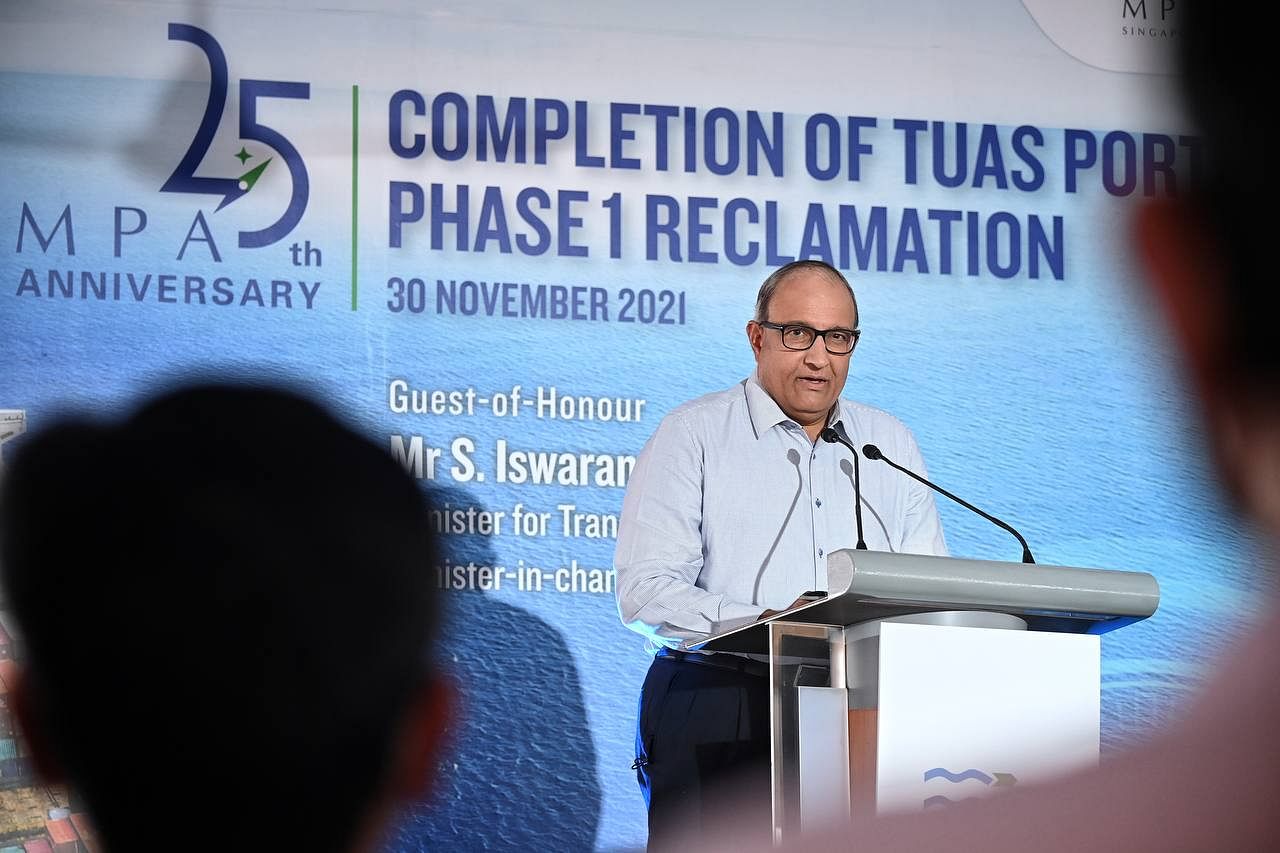
The port was first mooted in 2012 by the Government and is Singapore's fifth container port to be built since Tanjong Pagar Terminal started operations in 1972.
It has been touted as bigger, greener and more technologically advanced than its predecessors, and will consolidate operations now ongoing at Tanjong Pagar, Keppel, Brani and Pasir Panjang terminals, reducing the need to shift containers among these.
When completed, Tuas Port is expected to occupy 1,337ha of land, equivalent to three-quarters the size of Singapore's central area or twice the size of Ang Mo Kio town.
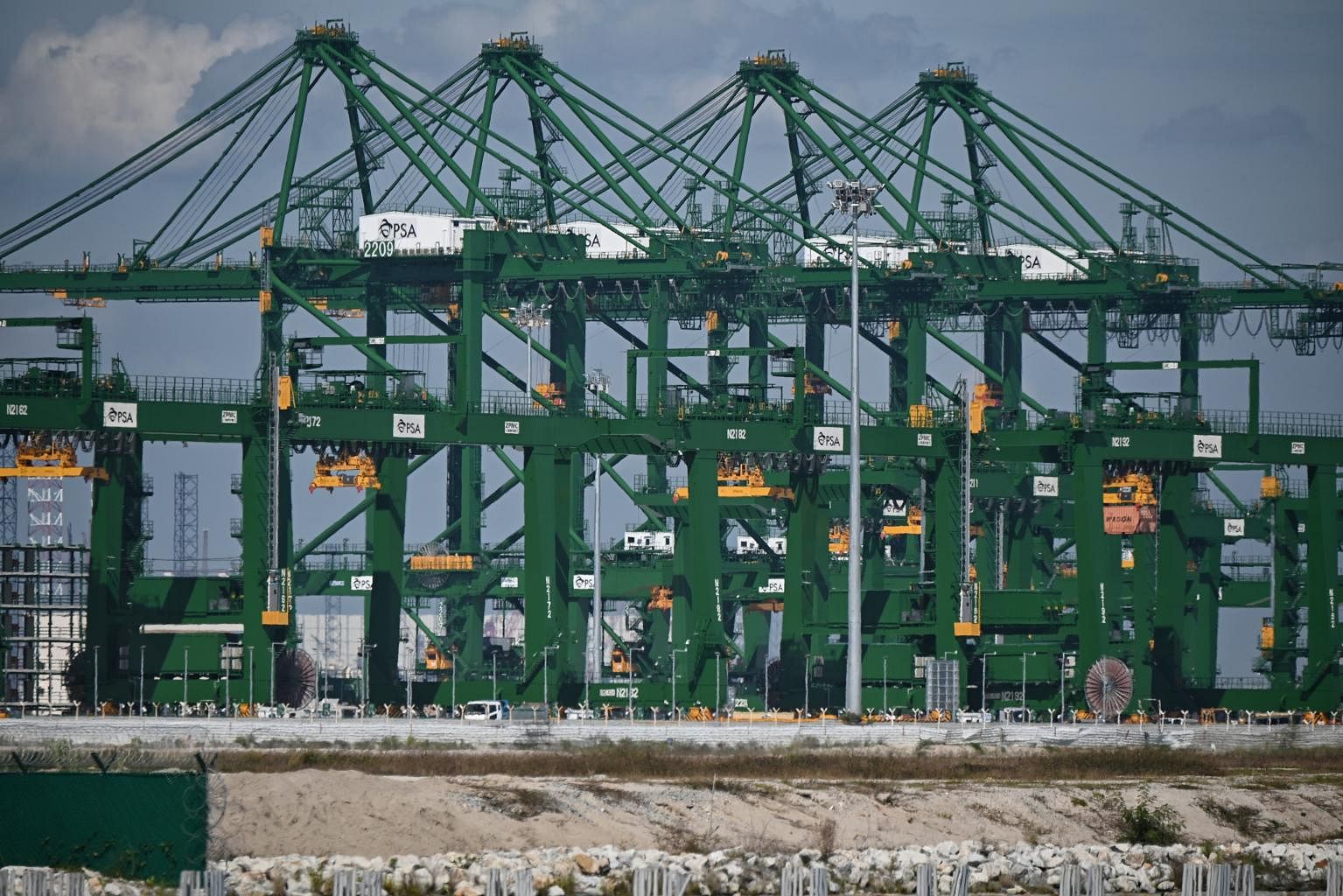
Phase 1 was completed by a joint venture of Dredging International Asia Pacific and Daelim Industrial, with Surbana Jurong as the supervising consultant.
The Maritime and Port Authority of Singapore (MPA) said on Tuesday that Phase 1 construction largely involved land reclamation works as 70 per cent of the space is reclaimed land.
A total of 221 10-storey-high structures called caissons, each about the weight of 8,000 cars, were prefabricated on land, and then laid on the seabed using a vessel to build a sea wall measuring 8.6km.
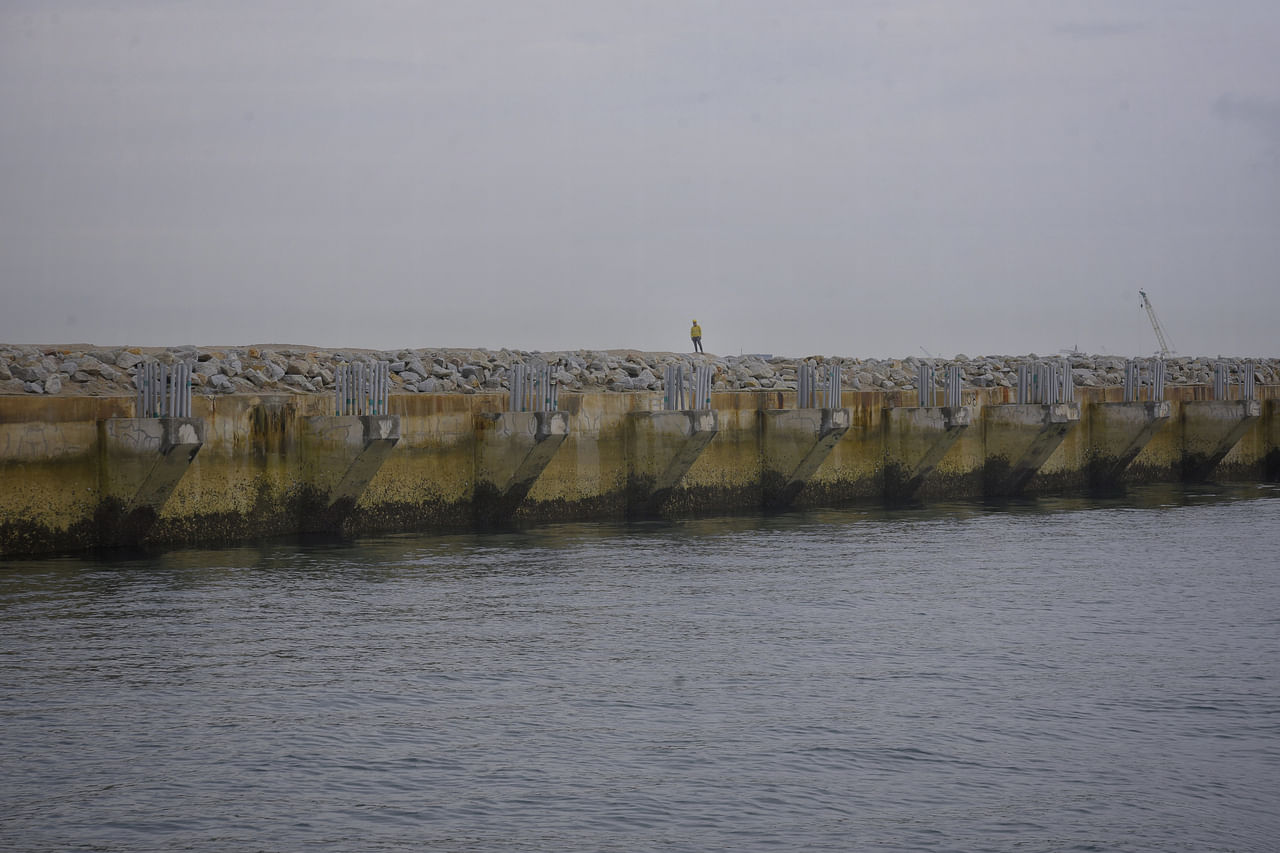
<p>Part of a caisson, a retaining structure used as a sea wall for reclaiming land in building Tuas Port. This forms the base from which the port will be built to at least 5m above sea level. The Meteorological Service Singapore assessed that the country’s average sea level today is 14cm above pre-1970 level in 2020.</p>
PHOTO: ST
This process was automated where possible. For example, an automatic rebar machine system was used to bend and cut steel bars used to reinforce the caissons automatically, increasing productivity by 25 per cent.
The single vessel used to lay the caissons on the seabed also reduced the manpower needed by 80 per cent when compared to more conventional methods that rely on multiple smaller vessels and divers.
Together with other innovative uses of technology - such as drones equipped with artificial intelligence processors to survey the land - MPA ultimately saved $1 billion in the building of Tuas Port Phase 1.
Mr Iswaran said environmental concerns were also considered, and this helped to make construction cheaper. More than 50 per cent of the fill materials for Tuas Port Phase 1 were either dredged materials from the seabed or excavated from other construction projects on land.
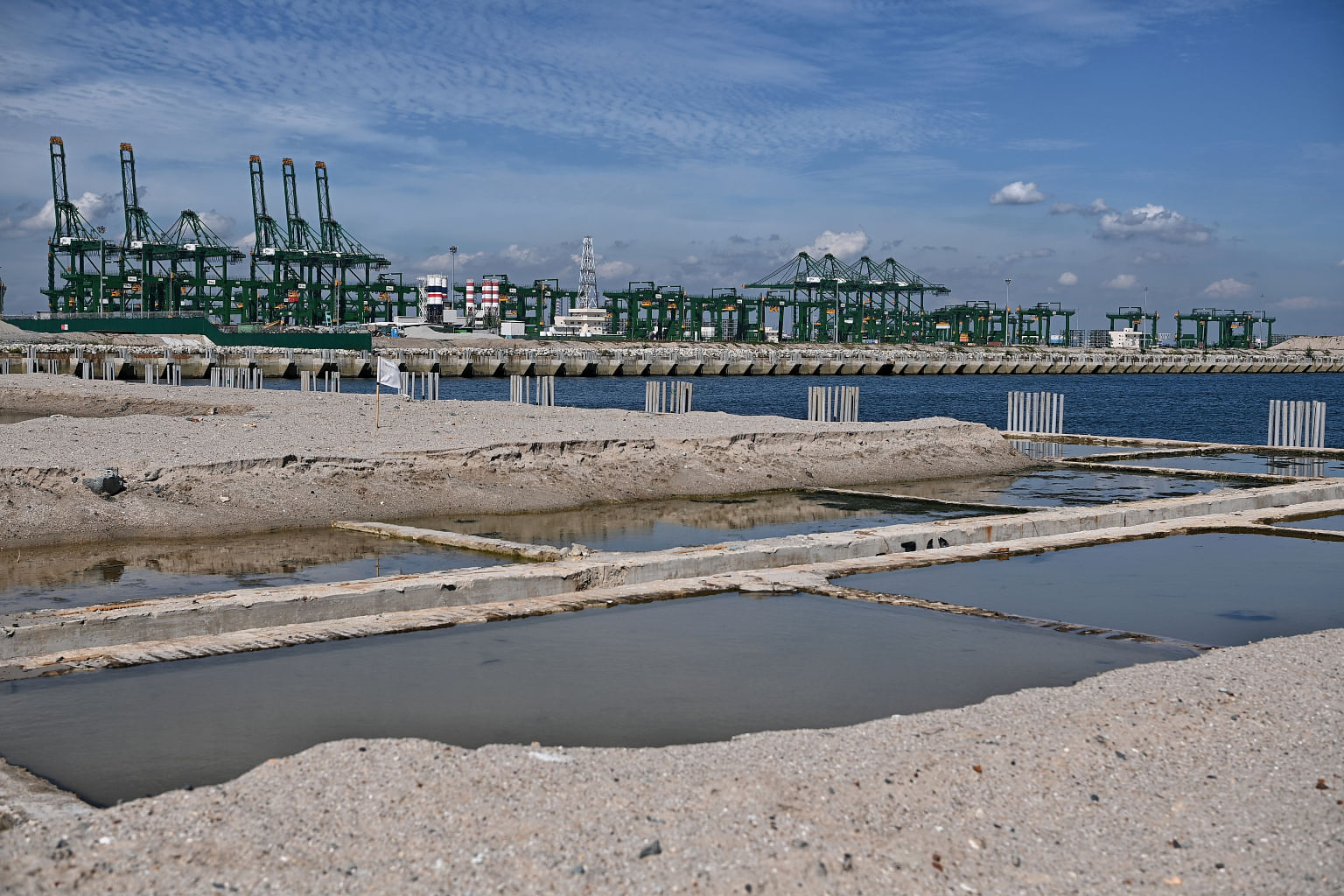
To balance environmental concerns, coral colonies were relocated to St John's and Sisters' Islands, and the wall surfaces of seven caissons built with cement mortar patches to promote coral growth and marine life.
MPA chairman Niam Chiang Meng said his agency is working with the National Environment Agency to explore using mixed materials from the Semakau Landfill for the next three phases of Tuas Port.
MPA is also looking into the use of greener concrete with lower carbon content to align the project closer with the nation's green plan, Mr Niam said.
Phase 2's reclamation works have already started and will involve 9.1km of caissons.


